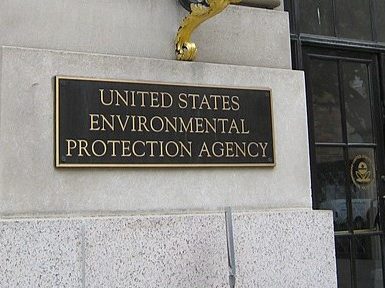Arizona’s economy and thousands of jobs could be in jeopardy if a controversial renewable energy initiative passes in the November general election.
The bottom line? It will cost a fortune. Fast-tracking to renewable energy comes at high cost in more ways than one.
Can Arizonans afford it? That’s the $8.3 billion question.
The constitutional change, called Proposition 127, would require utilities to provide half their annual retail sales from renewable energy sources by 2030. Dramatically scaling up massive infrastructure to meet this threshold requires huge investment. Much of the cost would be passed on to ratepayers.
An economic-impact study by Arizona State University shows that Arizona will lose $8.3 billion in Gross State Product and its residents will lose $3 billion in personal disposable income by 2030 if Prop 127 passes.
More than 70 community groups and over 250 elected officials from across Arizona have announced opposition to the initiative.

“We do want investment in renewable energy but we want investment that is made incrementally and strategically in order to ensure we are able to retain our competitive advantage and cost of living,” said Joyce C. Grossman, executive director of the Arizona Association for Economic Development. The organization advocates for responsible development.
Circumventing the Arizona Corporation Commission, elected by voters to set energy rates that are fair, is just bad policy, she said. Once in the constitution, it cannot be changed without a citizens’ vote or ¾ approval by the Arizona House and Senate.
Currently, Arizona ranks 27th nationally for electric rates, according to Electricity Local, a group that analyzes energy costs.
Arizona utilities warn these costs will only rise if Prop 127 becomes law. Several analyses back them up, including a study by the state’s Residential Utility Consumer Office (RUCO), a state agency charged with representing the interests of ratepayers.
Cost projections vary depending on the entity conducting the study, the utility being considered and customers it serves. Generally, the range of expected increase in electricity cost varies between $450 (for TEP customers) to $1,900 annually, within the APS territory. The significantly larger projected cost impact for APS ratepayers comes courtesy of an analysis conducted by the Seidman Research Institute at ASU, which assumes approval of Prop 127 will force the closure and replacement of Palo Verde Generating Station.
Regardless of the exact dollar amount, Prop 127 opponents say the measure will hurt those least able to pay, including low-income families and small businesses.
“Small-business owners face challenge to their success every day, and this is just one more thing they have to worry about,” said Jess Roman, interim CEO for the Arizona Small Business Association. “They’re wary and understandably resistant to anything that may restrict how they manage their business. Small businesses are the cornerstone of our state. They do not need constraints to their success.”
If voters approve Prop 127, economic-impact studies suggest it may significantly hamper growth. Here are the numbers:
Lost profits and reduced personal income
Under Prop 127, Arizona is projected to lose $8.3 billion in Gross State Product and $3 billion in personal disposable income by 2030, according to a study by the Seidman Research Institute at ASU.
Loss of state and local tax revenues
State and local governments would lose out on $677 million in tax revenue between now and 2030, the ASU study reports. Property taxes alone would fall by $195 million, with approximately $100 million of that coming from what would otherwise fund public schools.
Loss of jobs
Thousands of jobs would disappear as power plants across the state are forced to close. In poorer communities and on reservations, the impacts could be particularly damaging.
Earlier this month, the Navajo Nation issued a statement saying tribal leaders have “grave concerns” about Prop 127. Navajo Nation President Russell Begaye said he worries the initiative will force the closure of the Four Corners Power Plant and Navajo Mine, which employ a primary Navajo workforce and contribute a quarter-billion dollars to the local economy every year.
“This plant is the bedrock of the economy,” said President Begaye. “It puts food on the tables. We need to do everything we can to keep this plant running.”
Rural Arizona isn’t the only area concerned about Prop 127 job losses. Both APS and RUCO warn the initiative will force the near-term closure of Palo Verde Generating Station, the country’s largest provider of emissions-free electricity. The loss of Palo Verde would wipe out 3,000 jobs in the West Valley.
Higher utility costs for schools and governments
Escalating utility costs under Prop 127 would also impact K-12 schools. In the APS territory alone, the projected increase in costs to heat and cool school buildings totals approximately $300 million between now and 2030, according to a utility analysis.
These added costs would come at the expense of other priorities, like teacher pay and reduced class sizes, said Kevin McCarthy, president of the Arizona Tax Research Association. He speculated utility increases in other areas of local government and education could easily lead to new taxes in order to offset these costs – further aggravating the economic damage.
“The ongoing effort to diversify our energy portfolio in Arizona should not be advanced in isolation of its impact on the Arizona economy, Arizona taxpayers and Arizona local governments,” McCarthy said. “(Prop 127) is an extraordinarily irresponsible effort that should be rejected by all Arizonans.”
















Add comment